10 ways to make a beautiful imitation of masonry on the wall
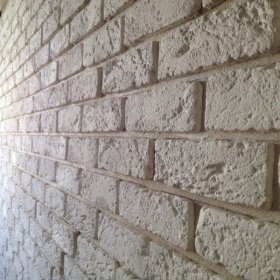
In the interior design has become a popular style of "loft". To create it, brickwork is often used. How to create an imitation of a brick tab with your own hands will be considered in this article.
Sawn brick
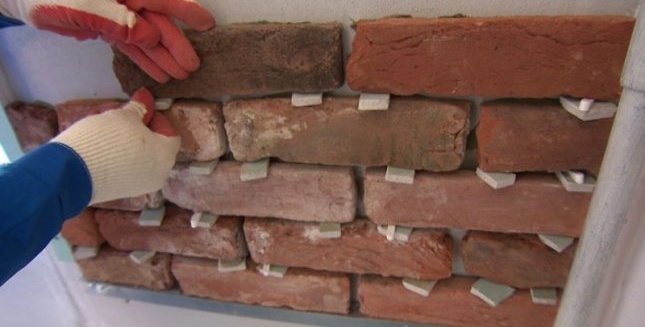
For independent preparation of the finishing material you will need a high-quality brick. It should be homogeneous, without voids and burnt inclusions. Such a brick is expensive, but you can look for old bricks that were still produced according to GOST. Sawed seams should be at least 10 mm. As a result, you will have a real brick tile, which is attached to the wall using ordinary tile glue.
Acrylic paint
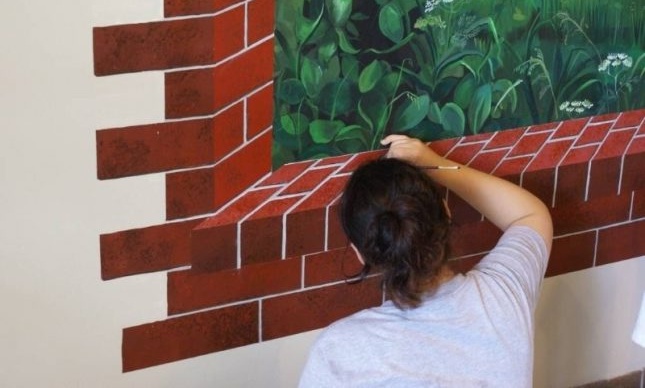
If you can even draw, then this option is for you. You will need:
- paints: white, black, red and brown;
- primer;
- tassels;
- sponge and masking tape.
The paint surface must be prepared in advance. Make the marking with tape in the form of a picture of a brick wall. Using a sponge, apply a brown paint, and then tint it with red. In order to create visual volume, draw shadows using white and black colors.
Special decorative panels

These panels are lightweight, easy to install, durable and water resistant. They can be the perfect decor for your kitchen, bath or balcony. This inexpensive material is attached to a completely flat surface with self-tapping screws or nails.
Wallpaper with matching pattern
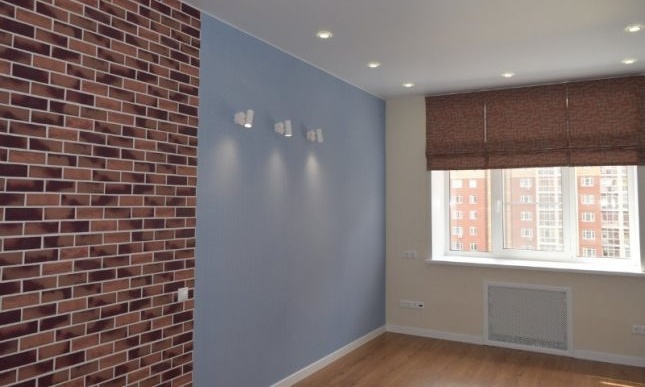
Advantages of this option: minimum financial costs, you can glue in any room, the walls under them breathe, and they will not take free space. However, there is a minus - the wallpaper has a flat surface, and they create a relative similarity with rough and voluminous bricks. In addition, they cannot be called waterproof, and stains from their surface are difficult to remove. To give a visual volume, 3D murals are suitable.
Plaster casting
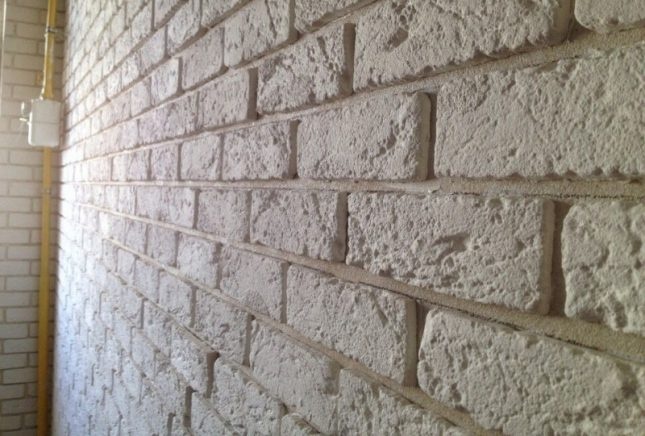
Plaster elements in the form of bricks create a high-quality imitation of masonry. To make blanks for decoration yourself, you will need gypsum, water, a fill form and a little dexterity. First you need to purchase or make a shape for the bricks.
- prepare the solution: add water in small portions to the dry mixture and mix thoroughly;
- Lubricate the inner surface of the mold for filling with soapy water or petroleum jelly, so it will be easier to get blanks;
- Pour the finished mixture into molds, smooth the surface. Leave for half an hour to harden;
- while the mixture solidifies, you can go to the wall and draw a bottom line, focusing on which you will stick the bricks.
Paint all the details and after they dry, start laying out the first row - along the line that you drew in advance. The second and all subsequent rows must be laid out in a checkerboard pattern. Ready wall can dry up to 3 days.
From decorative plaster
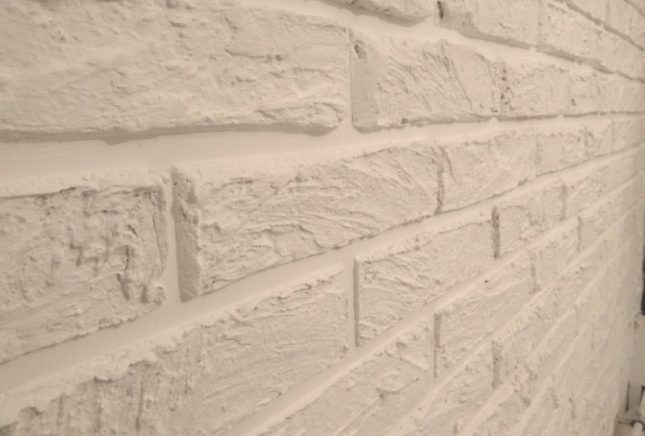
Decorative plaster allows you to create almost any texture surface.The walls on which the plaster will be applied must be perfectly even. The finished dry mixture is diluted with water and tinted. The resulting mixture is applied with a spatula, allowed to dry a little and form seams.
Concrete
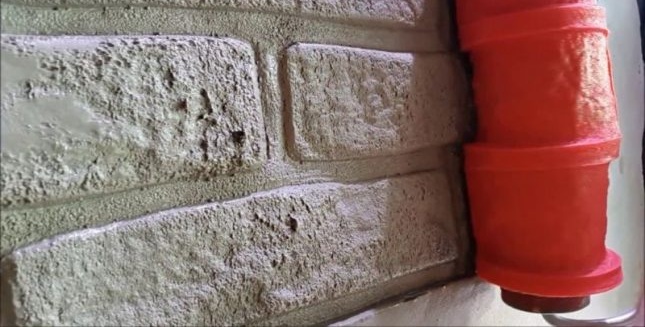
To simulate masonry using concrete, you will need: cement, sand, PVA glue and water, a thin bar, a knife and a stiff brush.
- prepare a solution: cement with sand in a ratio of 1: 3;
- clean the wall from dust and dirt, then prime;
- apply the finished solution with a layer of 10 mm .;
- as soon as he “grabs” mark the seams using a thin bar. Cut the solution along the marking lines with a knife and leave it for at least 12 hours;
- Scrape the remains with a stiff brush.
It remains only to paint the finished masonry.
Foam
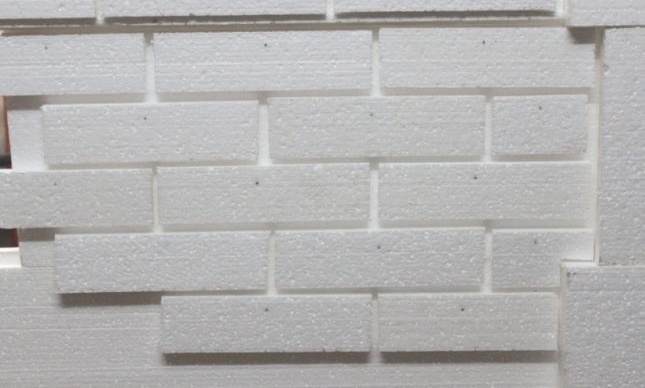
Light and airy material can be an alternative to the weighty bricks in the decoration of the apartment. Better parts will be made of polyurethane. Cut it into plates the size of a brick, and glue PVA to a flat surface of the wall, leaving small gaps. Try to make it look like brickwork when laying out a pattern. You can imitate the structure of a brick with a soldering iron. When these works are completed, in several stages, paint the finished panel.
Drywall
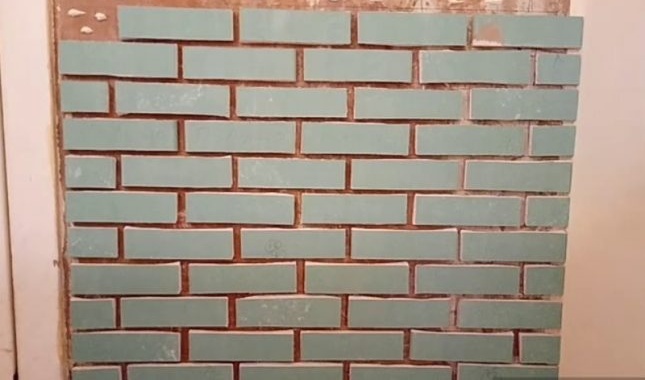
You will need a whole sheet of drywall or trim left over after repairs. Of these, future details of 250 × 65 mm are cut with a construction knife. To give the necessary surface structure of the bricks, putty is used, which is applied with a spatula. It is advisable to immediately form bumps from this mixture, similar to the surface of a brick. Details are dried for 2-3 hours. Finished elements are painted and left to rest for 3 days, after which they decorate the wall.
From tiles

A good alternative to natural brick. Yes, and to produce its own elements do not need to, everything has already been done at the factory. Therefore, we denote the pros and cons of clinker tiles.
Pros:
- high thermal insulation qualities;
- the porous surface is similar to a brick structure.
Minuses:
- strongly absorbs moisture, if not covered with glaze;
- not suitable for wet rooms;
- the material is expensive.
All elements are mounted on the wall with special glue for tiles and stone.
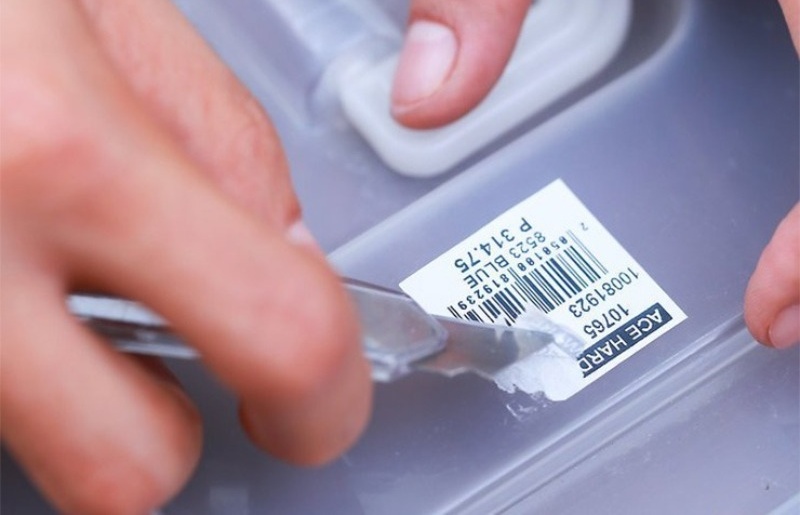
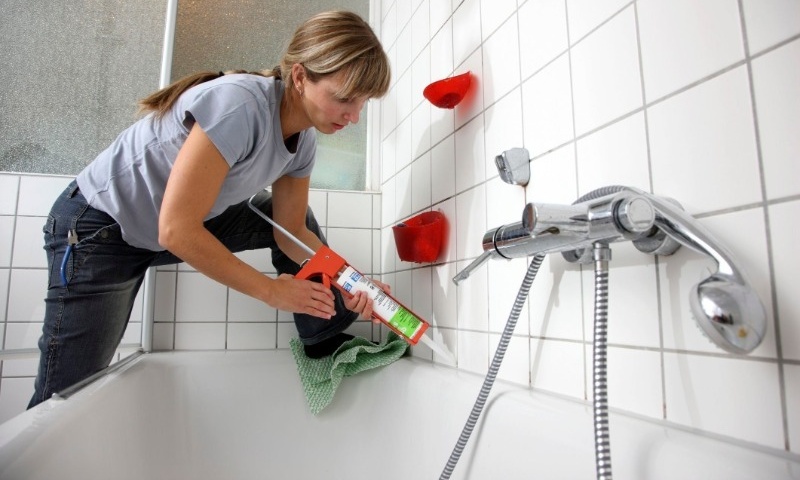
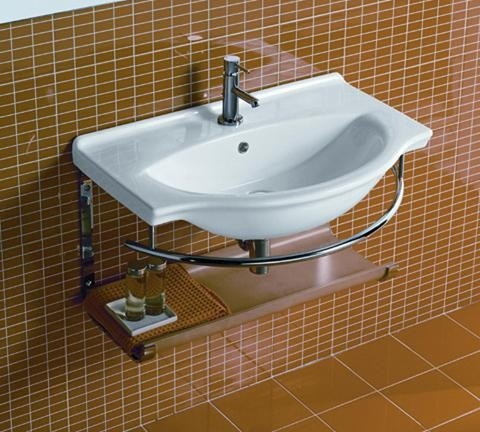
1 comment